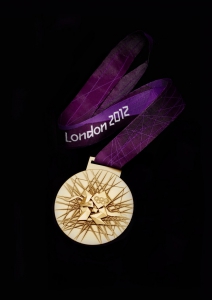Take 2 minutes to read this article
 This August, the world’s attention will focus on London, where the most incredible athletes alive will compete in the Games of the XXX Olympiad. But the Olympics aren’t just about the athletes—they are about the spectacle. They are about putting on the world’s biggest event and broadcasting it live around the world every two years.
This August, the world’s attention will focus on London, where the most incredible athletes alive will compete in the Games of the XXX Olympiad. But the Olympics aren’t just about the athletes—they are about the spectacle. They are about putting on the world’s biggest event and broadcasting it live around the world every two years.
Footage of the 2012 Olympics (all 5,300 hours) will be available worldwide via television, radio, online streaming, and mobile apps. News and results for each event will be available in real time. We’ll likely absorb the sights and sounds of the Games without much thought, but the technology that makes the Games possible is astonishing.
It takes hundreds of servers, thousands of computers, and over 150 miles of fiber optic cable to make the Olympics available to the world—available to you.
The 2010 Vancouver Games used 13 IT systems that included 800 servers and 6,000 computers, while a team of about 3,000 maintained the infrastructure throughout the games. The Vancouver Organizing Committee deployed 500 Sun servers—125 Sun SPARC Enterprise and 375 Sun Fire x64 machines. For storage, they relied on Sun StorageTek products; and for networking, they went with Avaya routers, switches, and IP telephony products. One of the 13 systems was solely dedicated to the processing and distribution of real time scoring and timing results. Results collected from sensors located on the tracks and courses were relayed through the Sun servers for worldwide distribution over the Internet.
But it’s Cisco networking that is stealing the tech show at the games this year, having signed on as the official network infrastructure supporter for London 2012. According to the official partnership website Cisco London 2012, the networking giant is supplying network security appliances, routing and switching hardware, wireless access points and controllers, and IP telephony equipment. Cisco networking hardware will be deployed at the Games’ 94 sites, including 34 competition venues across the UK, 20 mission-critical venues, the Olympic Village, and up to 50 spectator and athlete sites. The massive deployment creates 1,800 wireless access points, 16,500 IP telephones, 65,000 active connections, and 80,000 data ports. The amount of data per second that Cisco expects to transmit throughout the Games is equivalent to 3 Million HD movies per week.
So when you’re watching these 2012 Olympic Summer Games—whether on television, computer, or mobile phone— take a moment to appreciate the technology that’s bringing London to you. What happens behind the scenes can be just as spectacular as the event itself.
If you’re looking into purchasing Sun or Cisco machines for your own infrastructure, CentricsIT can help. With millions of dollars in enterprise hardware inventory—new and used—we offer the best pricing, customer service, and warranties available. Contact us today to start your project.
One of the featured videos on the UK Cisco YouTube channel reveals more about how the company has positioned itself “at the heart of the games.”
Sources:
SilliconValley.com
PC World
Cisco- At the heart of the Games, YouTube




